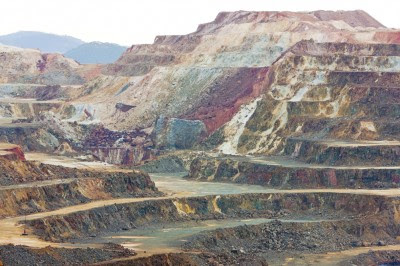
New research shows that existing copper resources can sustain increasing world-wide demand for at least a century, meaning social and environmental concerns could be the most important restrictions on future copper production.
Researchers from Monash University have conducted the most systematic and robust compilation and analysis of worldwide copper resources to date. Contrary to predictions estimating that supplies of this important metal would run out in around 30 years, the research has found there are plenty of resources within the reach of current technologies.
The database, published in two peer-reviewed papers, was compiled by Dr Gavin Mudd and Zhehan Weng from Environmental Engineering and Dr Simon Jowitt from the School of Geosciences. It is based on mineral resource estimates from mining companies and includes information vital for carbon and energy-use modelling, such as the ore grade of the deposits.
Dr Jowitt said the database could change the industry’s understanding of copper availability.
“Although our estimates are much larger than any previously available, they’re a minimum. In fact, figures for resources at some mining projects have already doubled or more since we completed the database,” Dr Jowitt said.
“Further, the unprecedented level of detail we’ve presented will likely improve industry practice with respect to mineral resource reporting and allow more informed geological exploration.”
Dr Mudd said the vast volumes of available copper meant the mining picture was far more complex than merely stating there were ‘x’ years of supply left.
“Workers’ rights, mining impacts on cultural lands, issues of benefit sharing and the potential for environmental degradation are already affecting the viability of copper production and will increasingly come into play,” Dr Mudd said.
Despite examples like the Ok Tedi mine in Papua New Guinea, where mining has continued despite widespread environmental degradation that has affected thousands of residents, non-economic factors have constrained some mining operations and the researchers believe this will become increasingly important in the near future. An example is the Pebble copper-gold project in Alaska, which after more than a decade still doesn’t have the necessary approvals due to the environmental and cultural concerns of nearby residents.
“Pressingly, we need to acknowledge that with existing copper resources we’re not just going to be dealing with the production of a few million tonnes of tailings from mining a century ago; we are now dealing with a few billion tonnes or tens of billions of tonnes of mine waste produced during modern mining,” Dr Mudd said.
The researchers will now undertake detailed modelling of the life cycles and greenhouse gas impacts of potential copper production, and better assessment of future environmental impacts of mining.
They will also create similar databases for other metals, such as nickel, uranium, rare earths, cobalt and others, in order to paint a comprehensive picture of worldwide mineral availability.
Note : The above story is reprinted from materials provided by Monash University.









